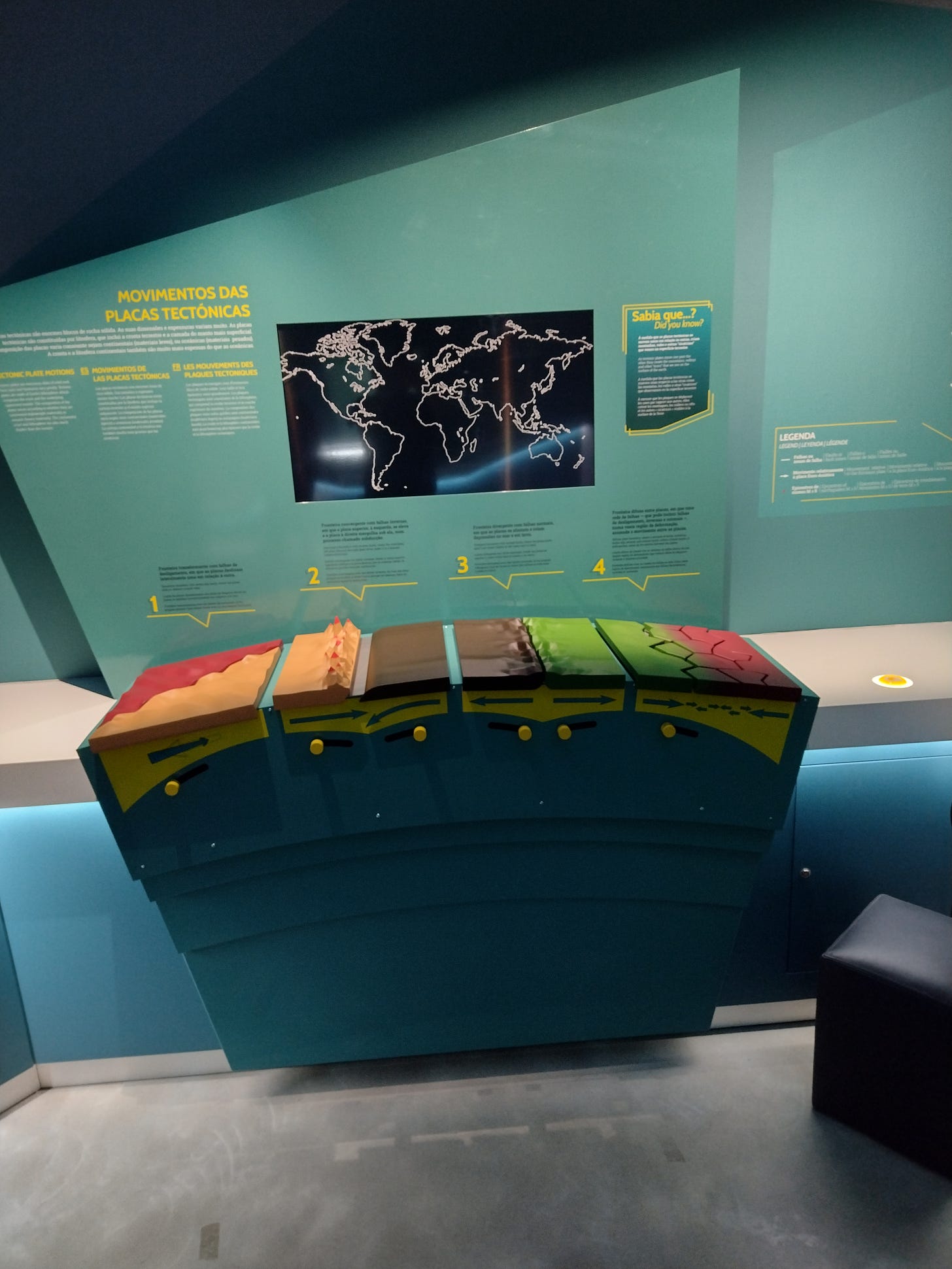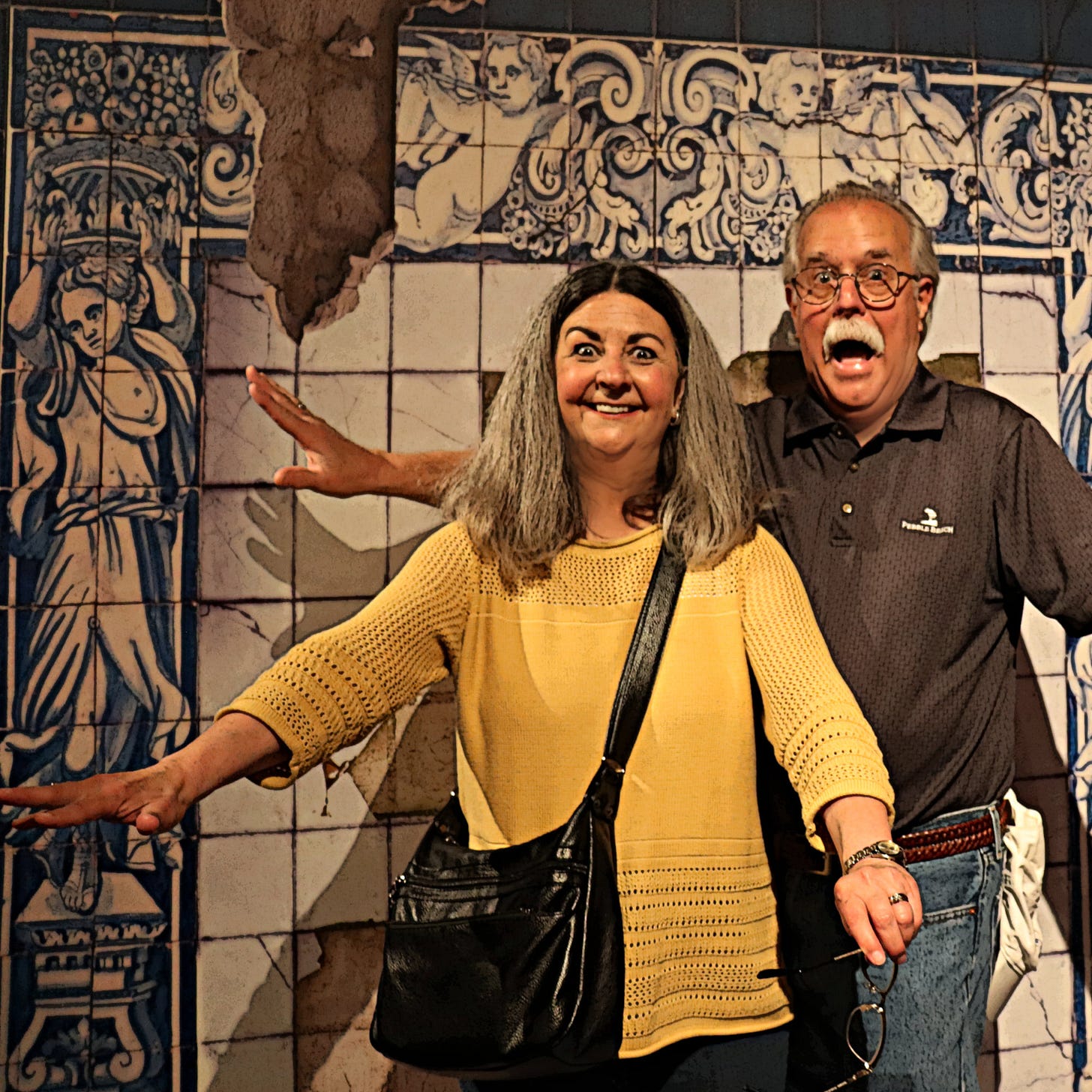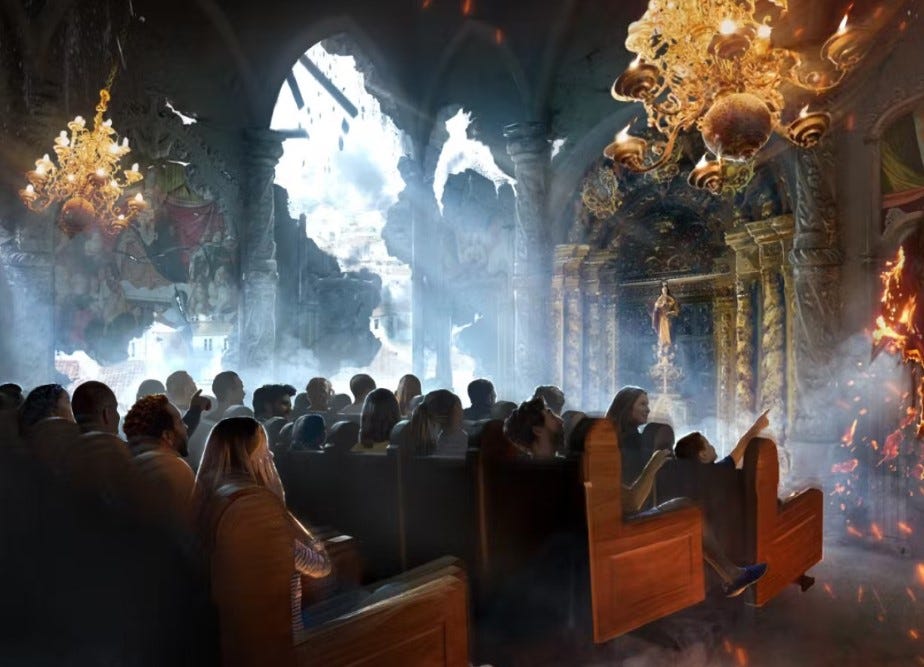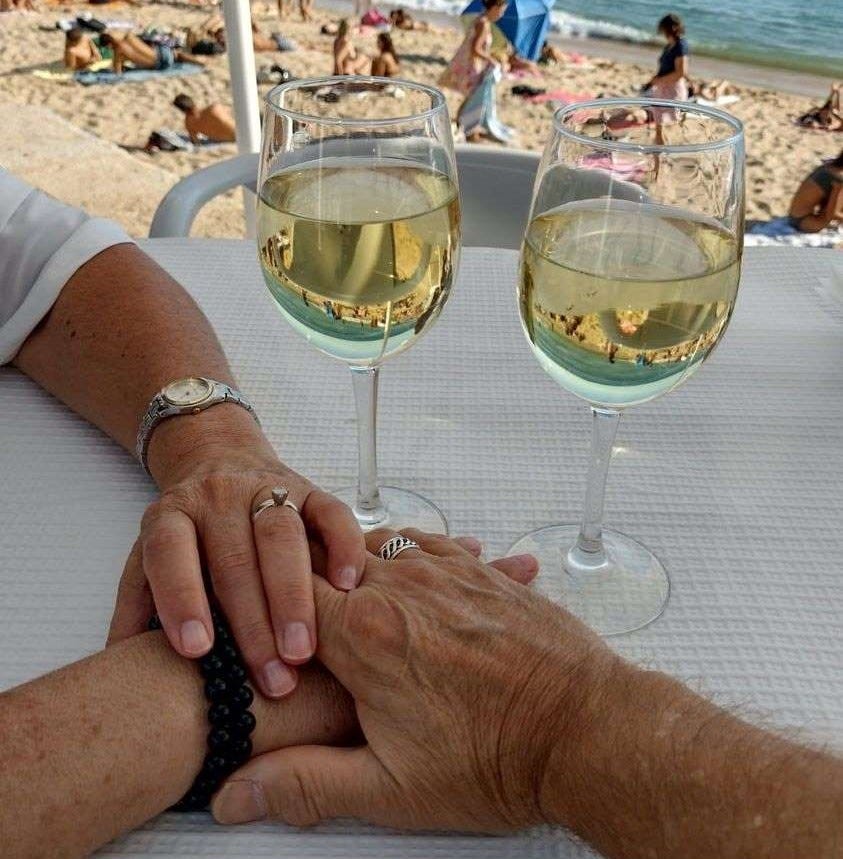On November 1, 1755, an earthquake destroyed two-thirds of Lisbon. It was also All Saints Day and many people were worshipping in churches and died tragically when structures collapsed around them and fires broke out as depicted in the above 6-minute video. Three tremors within ten minutes plus a 20-foot tsunami along the coast changed the face of the city forever. There were no earthquake recording devices invented at the time, but it has been estimated that the quake had a magnitude of 8.0. The estimated death toll was between 10,000 and 50,000 souls.
The Riberia Palace (the royal palace) was also destroyed. People lost their homes and possessions and fled Lisbon in droves. Much of the city’s cultural history – its works of art, architecture, and historical documents - perished on that fateful day.
A New Interactive Exhibit.
Paul and I were recently invited to attend the soft opening of The Lisbon Earthquake Center (QUAKE), a new interactive exhibit in Belém, next to the National Coach Museum. The approximately 1,900 square foot building combines the history and the science of earthquakes and takes visitors back in time to November 1,1755, using technology, simulators, and video mapping.
Groups of twenty-three people at a time are admitted into the exhibit which consists of several rooms. The first room, called the ‘waiting room’ has a doomsday-type of countdown clock over a doorway indicating the countdown to the quake.
There are paintings and images on the walls depicting 17th century Lisbon. There’s also an ‘earthquake selfie’ wall where several people in our Lisbon Social & Cultural Club group, including Paul and I, got into ‘earthquake mode.’
This is not Disney.
Some of the advertisements for QUAKE make it seem like this is a Disney or other type of theme park simulator ride – and to be honest, that’s what most of us in our group expected, especially with that earthquake selfie wall.
But as we later discovered, that’s not really the intent (although there is some simulation). The goal of the exhibit is not only to entertain but to educate people about earthquake safety as Portugal is in a seismic area and there’s no guarantee that another earthquake won’t occur in our own lifetime.
Learning about seismology.
There’s a room dedicated to seismology, teaching visitors about how earthquakes happen. There are interactive stations with seismic displays showing how earthquakes impact structures and continents.

Another room is divided into three sections where visitors can see the comparison of the Lisbon earthquake to other major earthquakes worldwide.
Life before the earthquake.
One room depicts life in Lisbon before the earthquake. Although no one really knows what the city looked like, this room has been created with scenes of what every day Portuguese life might have been like in the 1700’s. The video mappings make a visitor feel as if they’re peering into an opening in a wall, into another time. Children running around, dogs barking, people greeting each other, nuns with baked goods, people chatting. For me, I thought about how life can change so quickly for people no matter the place or the time – happy and oblivious one minute and then suddenly thrown into devastation. It made me realize how precious time really is.
The Church of São Nicolau.
The highlight of the exhibit is the recreation of the Church of São Nicolau. Visitors are escorted into the ‘church’ and asked to sit in large wooden pews. These aren’t the kind of pews where people sit next to each other bench-style. Each pew is an individual seat connected in rows.
There are archways surrounding the church. The center archway is the altar where a priest and altar boys are conducting Mass. The video mapping creates a realistic scene where you feel as if you’re actually sitting in a church listening to Mass.
As mentioned previously, the 1755 earthquake happened on All Saints Day, so the setting feels authentic and appropriate. There were three tremors with the third tremor being the most devastating.
For several minutes, you observe the Mass and then there’s the first tremor, where your pew chair moves slightly. The second tremor comes, your chair moves more vigorously, and still, Mass continues. When the third tremor comes, the building collapses and fires break out. The pews move in simulation so that you can feel what it might have been like to be present in church during the earthquake. The building and fires surround you. The devastation is evident and eerie, although the movement of the pews is not overly drastic (you won’t be screaming like on a roller coaster ride), as no one wants to be responsible for panic attacks or cardiac arrest (although if you have a medical condition, you might want to ask to skip this part of the exhibit).
The aftermath room.

Exiting the church, you walk though to another room depicting the aftermath of the earthquake. There are sounds of screams, fires, and confusion. The video mapping continues in this room and shows the devastation of the earthquake and tsunami. The floor in this room is uneven and the room is warm – much like the atmosphere might have been with all the fires burning in the city.
Office of Sebastião José de Carvalho.
The following room is a re-creation of the office of Sebastião José de Carvalho and Melo, the Marquis of Pombal. The Marquis was responsible for the reconstruction of Lisbon. He acted quickly, mobilizing troops, erecting temporary shelters and hospitals, and obtaining needed supplies for citizens. With the assistance of bishops, who sent surveys to the earthquake survivors, Carvalho was able to map out where and when the three tremors hit.
With the assistance of Portuguese architect and military engineer, Eugénio dos Santos, Carvalho reconstructed Lisbon, using a grid street pattern. New building techniques were studied and implemented to help reduce the risk of building damage during any future earthquakes.
Some observations
You cannot pick-and-choose the rooms you want to go through. Once you’re in a room, you stay there until an exhibit associate comes to bring you to the next room. If you have an emergency, there’s an emergency button in the room you can use.
I did see elevators but am unsure if they function for each room. Having said that there are plenty of stairs to climb and the flooring in some of the exhibit rooms is not smooth, especially in the aftermath room. The facility has a mobility policy.
There are ‘listening’ stations in many of the rooms where a ‘professor’ or his ‘granddaughter’ talk about the science and history of earthquakes. Some rooms have ample listening stations and others do not. There are four different languages available.
Some rooms have a lot of signage that you read describing the science of earthquakes and the history of the 1755 earthquake.
There were no associates in the rooms explaining the exhibits, so we couldn’t ask questions.
Some of the interactive exhibits are hands on, so you may have to wait your turn to use them. Although there are hand sanitizer stations, you might want to bring your own. Lots of people may have handled the equipment before you get to it.
RFID bracelets that you wear, are used to scan the exhibits you participate in. The information will then be emailed to you so that you don’t have to take notes or try to remember all the facts. The bracelets were not properly functioning during our visit, so I don’t know whether or not this is a useful tool.
Plan 1 hour and 30 minutes for this exhibit.
This exhibit is ideal for school groups.
Group discounts (10 or more) are available.
This is not an exhibit for little children under the age of six.
There are free lockers available to store your backpack, jacket, or purse.
Restrooms are in the lobby.
A gift shop and snack bar are just outside of the last room of the exhibit. The gift shop has many earthquake preparedness items for purchase. A complimentary earthquake preparedness brochure is also available (only in Portuguese).
Photos are allowed – no flash.
Wrapping up.
Although we expected a different experience, we’re glad we went as we learned the history of the 1755 earthquake, which is an important part of Portugal’s heritage. And if you’re planning to live in this country, this is one piece of history you should be well aware of as it is still widely talked about. We also learned about how to stay safe during an earthquake if/when there is one in the future.
Having said that, I think people may not realize that this is not an entertainment venue. I think the organization should do a bit more to emphasize that it’s an educational exhibit; otherwise, I think visitors may be disappointed. This screenshot (just my opinion) makes it look like an interactive thrill ride.
As we went to a soft opening (the exhibit officially opens on May 8th), there were some glitches, timing delays and overlapping of tour groups, which I expect will be corrected at the time of the official opening.
The regular admission price may be steep for folks for what this exhibit is. Because we were at the soft opening, we had a significant discount. Personally, I think the regular pricing is too high. If you decide to go, you’ll have to make that judgement for yourself.
If you visit:
Rua Cais da Alfândega Velha, 39, 1300-598 Lisbon, Portugal
Thank you for reading Our Portugal Journey. This blog is a subscriber supported publication but has no paywall – in other words, you can subscribe for free and receive all the content. However, if you find my content valuable, please consider becoming a Supporting Subscriber for a nominal fee either on a monthly or annual basis right here. Just want to buy me a glass of wine? You can do that here.
Until next time…
Obrigada!
Carol.










Share this post